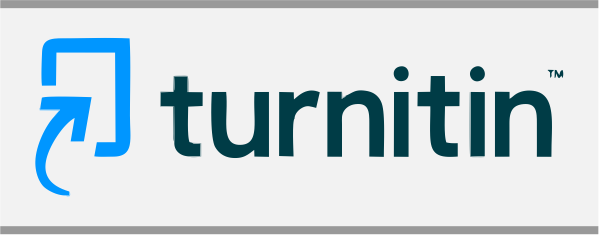FREEDOM TO CHOOSE READING MATERIAL AND ITS EFFECTIVENESS TO READING COMPREHENSION
(1) UIN Datokarama Palu
(2) UIN Datokarama Palu
(*) Corresponding Author
Abstract
Keywords
Full Text:
PDFReferences
Al Yaaqubi, A., & Al Mahrooqi, R. (2013). How Does Reading Literature for Pleasure Affect EFL Learners? The Asian EFL Journal, 72(November), 20–46.
Alfa, T., Telaumbanua, E., & Umiyati, M. (2019). Readability of Reading Texts in Student’s Handbook at The Ninth Grade of SMP Negeri 1 Telukdalam. International Journal of Systemic Functional Linguistics, 2(2), 71–78. https://doi.org/https://doi.org/10.1057/9781137388773
Behrman, E. H., & Street, C. (2005). The validity of using a content-specific reading comprehension test for college placement. Journal of College Reading and Learning, 35(2), 5–21. https://doi.org/10.1080/10790195.2005.10850170
Cirino, P. T., Miciak, J., Ahmed, Y., Barnes, M. A., Taylor, W. P., & Gerst, E. H. (2019). Executive function: association with multiple reading skills. Reading and Writing, 32(7), 1819–1846. https://doi.org/10.1007/s11145-018-9923-9
Clark, C., & Phythian-sence, C. (2008). Interesting choice The ( relative ) importance of choice and interest in reader engagement. London.
Clark, C., & Zoysa, S. De. (2011). Mapping the interrelationships of reading enjoyment , attitudes , behaviour and attainment An exploratory investigation. London.
Cresswell, J. W. (2014). Research Design Qualitative, Quantitative, and Mixed Methods Approaches. Thousand Oaks: SAGE Publications, Ink.
Day, R., & Bamford, J. (2002). Top Ten Principles for Teaching Extensive Reading: A Response. Reading in a Foreign Language, 14(2).
Day, R. R. (2018). Extensive Reading. The TESOL Encyclopedia of English Language Teaching, 1–7. https://doi.org/10.1002/9781118784235.eelt0472
Divina, M. (2009). a Study on the Reading Skills of Efl University Students. TEFLIN Journal, 20(1), 37–47. https://doi.org/10.15639/teflinjournal.v20i1/37-47
Eviyuliwati, I., & Sarwan, C. A. (2018). the Effect of Hamburger Strategy on Students’ Reading Comprehension of Recount Texts. IJEE (Indonesian Journal of English Education), 5(1), 49–60. https://doi.org/10.15408/ijee.v5i1.9880
Fotovatian, S., & Shokrpour, N. (2007). Comparison of the efficiency of reading comprehension strategies on iranian university students’ comprehension. Journal of College Reading and Learning, 37(2), 47–63. https://doi.org/10.1080/10790195.2007.10850197
Husna, N. (2019). Developing students’ critical thinking through an integrated extensive reading program. Teflin Journal, 30(2), 212–230. https://doi.org/10.15639/teflinjournal.v30i2/212-230
Iftanti, E. (2012). a Survey of the English Reading Habits of Efl Students in Indonesia. TEFLIN Journal, 23(2), 149–164. https://doi.org/10.15639/teflinjournal.v23i2/149-164
Islam, S., & Santoso, E. (2018). the Effectiveness of Using Authentic Texts in the Teaching Reading Comprehension. ETERNAL (English, Teaching, Learning, and Research Journal), 4(2), 166. https://doi.org/10.24252/eternal.v42.2018.a3
Ismail, S. A. M. M., Karim, A., & Mohamed, A. R. (2018). The Role of Gender, Socioeconomic Status, and Ethnicity in Predicting ESL Learners’ Reading Comprehension. Reading and Writing Quarterly, 34(6), 457–484. https://doi.org/10.1080/10573569.2018.1462745
Khoshbakht, F., & Gorjian, B. (2017). Using Authentic Materials in Teaching Reading Comprehension to EFL Learners. Journal of Applied Linguistics and Language Learning, 2017(2), 48–54. https://doi.org/10.5923/j.jalll.20170302.03
Kirin, W. (2010). Effects of extensive reading on students’ writing ability in an EFL class. Journal of Asia TEFL, 7(1), 285–308.
Le Cordeur, M. (2011). The struggling reader: Identifying and addressing reading problems successfully at an early stage. Per Linguam, 26(2), 77–89. https://doi.org/10.5785/26-2-23
Lestari, A., Sofendi, S., & Petrus, I. (2018). The correlations among undergraduate EFL students’ reading habit, multiple intelligences, and writing mastery. Indonesian Journal of Applied Linguistics, 8(1), 110–120. https://doi.org/10.17509/ijal.v8i1.11470
Lin, L.-F. (2010). Senior High School Students’ Reading Comprehension of Graded Readers. Journal of Language Teaching and Research, 1(1), 20–28. https://doi.org/10.4304/jltr.1.1.20-28
Mallette, M., & Barone, D. (2013). On using google forms. The Reading Teacher, 66(8), 625–630. https://doi.org/10.1002/TRTR.1169
McLaughlin, M. (2012). Reading comprehension: What every teacher needs to know. Reading Teacher, 65(7), 432–440. https://doi.org/10.1002/TRTR.01064
Mulatsih, B. (2020). Penerapan Aplikasi Google Classroom , Google Form , Dan Quizizz Dalam Pembelajaran Kimia Di Masa Pandemi Covid-19 Application of Google Classroom , Google Form and Quizizz in Chemical Learning During the Covid-19 Pandemic. Ideguru: Jurnal Karya Ilmiah Guru, 5(1), 16–26. https://doi.org/https://doi.org/10.51169/ideguru.v5i1.129
Ng, Q. R., Renandya, W. A., & Chong, M. Y. C. (2019). Extensive reading: Theory, research and implementation. Teflin Journal, 30(2), 171–186. https://doi.org/10.15639/teflinjournal.v30i2/171-186
Ngabut, M. N. (2015). Reading theories and reading comprehension. Journal on English as a Foreign Language, 5(1), 25–36. https://doi.org/https://doi.org/10.23971/jefl.v5i1.89
OECD. (2018). Programme for International Student Assessment (PISA) Result from PISA 2018. Retrieved from http://www.oecd.org/pisa/ Data
Prowse, P. (2002). Top Ten Principles for Teaching Extensive Reading: A Response. Reading in a Foreign Language, 14(2).
Puspitasari, E. (2020). When the books and reading friends are up to us : Students ’ Responses about an Extensive Reading Program. Eralingua: Jurnal Pendidikan Bahasa Asing Dan Sastra, 4(2), 162–173. https://doi.org/https://doi.org/10.26858/eralingua.v4i2.12376
Rawian, R. M., Mokhtar, A. A., & Yahaya, M. F. (2018). A Disclosure of Reading Rate and Its Effect on Comprehension in Second Language Learning Context. JEES (Journal of English Educators Society), 3(1), 1. https://doi.org/10.21070/jees.v3i1.1274
Razavi, M., & Gilakjani, A. P. (2020). The effect of teaching cultural content on intermediate EFL learners’ reading comprehension ability. Teflin Journal, 31(2), 302–321. https://doi.org/10.15639/teflinjournal.v31i2/302-321
Rohmah, H. (2018). The Implementation of Herringbone Technique in Reading Comprehension at Second Semester of Non-English Department. Celt: A Journal of Culture, English Language Teaching & Literature, 18(1), 59. https://doi.org/10.24167/celt.v18i1.555
Ruzin, M. (2019). Implementing Extensive Reading to Boost Students ’ Reading Ability. Proceeding of 1st Conference of English Language and Literature (CELL), 1–11.
Sudiran. (2011). A Model of the Use of Internet Media in Reading Comprehension. A Journal of Culture, English Language, Teaching & Literature, Vol. 11, pp. 177–210. Retrieved from journal.unika.ac.id/index.php/celt/article/view/183
Sugiyono. (2007). Statistika untuk Penelitian (12th ed.; E. Mulyatiningsih, Ed.). Bandung: Alfabeta.
Udu, T. T. (2021). Teachers ’ and Students ’ Attitudes towards Reading and Writing: Do They Correlate to Students ’ Achievement in English ? Studies in English Language and Education, 8(1), 143–156. https://doi.org/https://doi.org/10.24815/siele.v8i1.17524
Wolf, M. C., Muijselaar, M. M. L., Boonstra, A. M., & Bree, E. H. de. (2018). The relationship between reading and listening comprehension : shared and modality ‑ specific components. Reading and Writing. https://doi.org/10.1007/s11145-018-9924-8
Yorio, C. A. (1969). Some Sources of Reading Problems for Foreign- Language Learners. Language Learning, 21(1), 107–115.
Yulianto, Y. (2019). An Analysis on Readability Level of English Reading Texts for Eighth Grade Students Abstract. J-SHMIC Journal of English for Academic, 6(1), 81–91. https://doi.org/https://doi.org/10.25299/jshmic.2019.vol6(1).2675
Zipke, M. (2008). Teaching Metalinguistic Awareness and Reading Comprehension With Riddles. The Reading Teacher, 62(2), 128–137. https://doi.org/10.1598/rt.62.2.4
DOI: 10.24235/eltecho.v7i1.9940
Article Metrics
Abstract view : 72 timesPDF - 12 times
Refbacks
- There are currently no refbacks.
Â
This Journal is indexed by:
Â

This work is licensed under a Creative Commons Attribution 4.0 International License.










